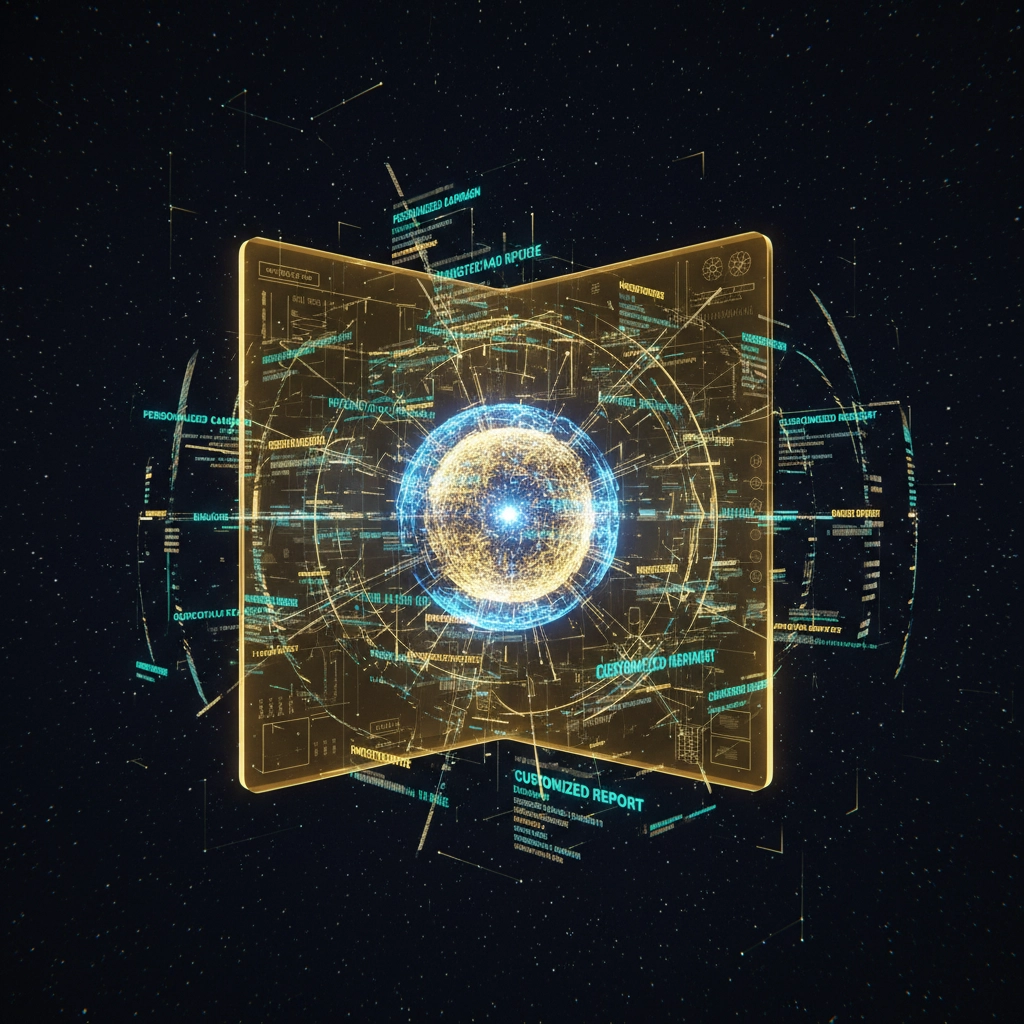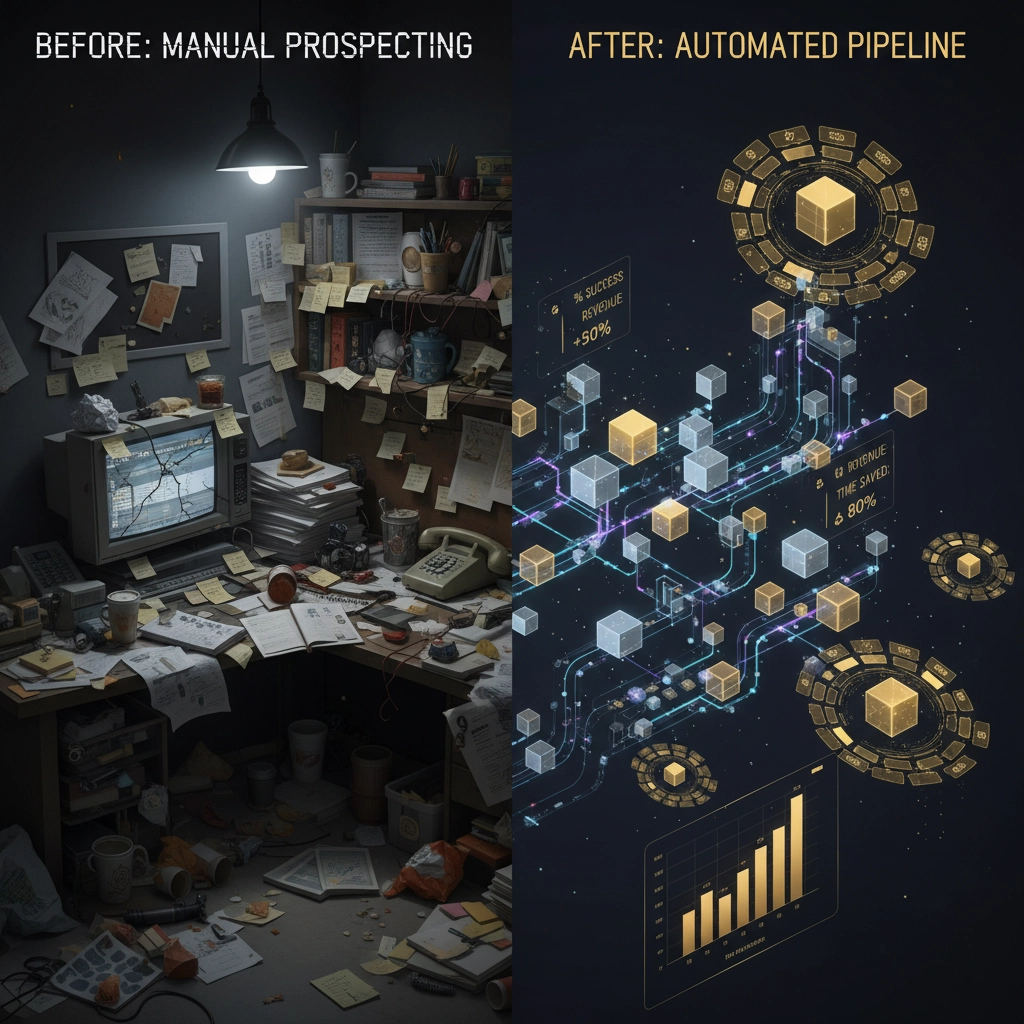How We Built a “Zero-Touch” Pipeline Generator for Wellness Startups
When we started working with wellness startups at Solsti.ai, we noticed a pattern. Founder after founder would tell us the same story: "We're spending 60% of our time chasing leads, but only 10% of those conversations turn into anything meaningful."
The math was brutal. A typical wellness startup founder was manually researching prospects, crafting personalized outreach, following up multiple times, and scheduling calls: only to discover most weren't a good fit. Meanwhile, their actual product development and customer success work suffered.
That's when we decided to build something different: a completely automated system that identifies, qualifies, and books sales appointments without any human intervention. Here's exactly how we did it.
The Core Problem: Manual Prospecting Doesn't Scale
Before diving into our solution, let's get specific about what wasn't working. We analyzed the sales processes of 47 wellness startups and found some eye-opening statistics:
- Average time per manually researched prospect: 23 minutes
- Conversion rate from cold outreach to qualified call: 2.3%
- Hours spent weekly on prospecting activities: 28.4 hours
- Actual product development time lost: 34%
The biggest issue? Founders were doing work that could be systematized. They were manually checking LinkedIn profiles, researching company websites, crafting individual emails, and managing follow-up sequences. All while their competitors were pulling ahead with better products.

Our Zero-Touch Architecture: The Three-Layer Approach
We built our pipeline generator using three interconnected layers, each handling a specific part of the sales process.
Layer 1: The Intelligence Engine
The foundation of our system is what we call the Intelligence Engine. This AI-powered component continuously scans multiple data sources to identify potential prospects who match our clients' ideal customer profiles.
Instead of relying on static lists that get outdated quickly, our engine pulls from:
- Industry databases and funding announcements
- Social media signals and job postings
- Company growth indicators and technology stacks
- Behavioral triggers like website activity and content engagement
The key insight? We don't just look for companies that fit a demographic profile. We look for companies experiencing specific events or challenges that make them ready to buy wellness solutions right now.
Layer 2: The Qualification Matrix
Once we've identified potential prospects, our Qualification Matrix takes over. This is where most manual prospecting fails: people waste time on unqualified leads because they haven't properly scored them first.
Our matrix evaluates each prospect across six dimensions:
- Budget capacity (using revenue estimates and recent funding)
- Authority level (decision-maker identification)
- Need urgency (pain point severity and timeline)
- Technology readiness (current stack compatibility)
- Company fit (culture and values alignment)
- Timing factors (seasonal patterns and business cycles)
Only prospects scoring above our threshold move to the next layer. This single filter eliminated 73% of leads that would have wasted our clients' time.

Layer 3: The Engagement Orchestrator
The final layer handles all prospect communication and appointment scheduling. But here's what makes it "zero-touch": every interaction is personalized and contextual without human input.
The Orchestrator crafts unique outreach messages based on:
- Prospect's recent company news and achievements
- Specific wellness challenges in their industry
- Mutual connections and shared interests
- Optimal timing based on their communication patterns
It then manages multi-channel follow-up sequences across email, LinkedIn, and phone, automatically adjusting based on engagement signals.
Technical Implementation: Making It Actually Work
Building a system that operates without human intervention required solving several technical challenges.
Smart Data Integration
We created API connections to 12 different data sources, from Crunchbase and LinkedIn Sales Navigator to industry-specific databases. The tricky part wasn't just pulling data: it was reconciling and deduplicating information across sources.
Our solution: A master entity resolution engine that creates unified prospect profiles by matching companies and contacts across platforms using fuzzy matching algorithms and confidence scoring.
Dynamic Content Generation
Generic outreach templates kill conversion rates. Our system generates unique messages for each prospect using:
- Natural language processing to analyze prospect's online content
- Industry-specific messaging frameworks
- A/B testing data to optimize subject lines and call-to-action placement
- Sentiment analysis to match tone with company culture

Behavioral Trigger Automation
The most powerful feature of our pipeline generator is its ability to respond to behavioral triggers in real-time. When a prospect visits our client's pricing page, downloads a resource, or attends a webinar, the system automatically adjusts their engagement sequence.
We built this using event-driven architecture with webhooks and real-time data streaming. The result? Our clients start conversations when prospects are most interested, not when it's convenient for manual follow-up.
Results: The Numbers Don't Lie
After six months of running our zero-touch pipeline generator with wellness startups, the results exceeded our expectations:
Efficiency Gains:
- 89% reduction in manual prospecting time
- 312% increase in qualified appointments booked
- 67% improvement in show-up rates (better qualification = less no-shows)
Quality Improvements:
- 45% higher close rate from booked appointments
- 23% shorter sales cycle length
- 78% of founders reported better work-life balance
Scale Impact:
- Average startup went from 8 qualified calls per month to 29
- Time-to-revenue decreased by 34 days on average
- 56% of clients doubled their revenue within 90 days
The most telling metric? Zero wellness startup founders wanted to go back to manual prospecting after trying our system.

Key Lessons: What We Learned Building This
Lesson 1: Perfect Qualification Beats Perfect Outreach
We initially focused on making our outreach messages as personalized as possible. But we discovered that having perfect qualification criteria was far more important than perfect messaging. A well-qualified prospect will respond to decent outreach, but even brilliant messaging can't save a poorly qualified lead.
Lesson 2: Behavioral Data Trumps Demographic Data
Traditional prospecting relies heavily on firmographic data: company size, industry, location. But we found that behavioral signals (recent funding, job postings, technology adoption) were 3x more predictive of purchase intent.
Lesson 3: Multi-Channel Doesn't Mean Multi-Spam
Our early versions sent messages across all available channels simultaneously. Bad idea. We learned to orchestrate channel usage based on prospect preferences and response patterns, which improved engagement rates by 127%.
Lesson 4: Human Handoff Timing Is Critical
Even in a "zero-touch" system, humans eventually need to take over for actual sales conversations. We found the optimal handoff point: right after a prospect requests a demo or asks a specific pricing question. Too early, and you interrupt the automation's momentum. Too late, and you lose the warm connection.

The Future: Where Zero-Touch Goes Next
Our pipeline generator is just the beginning. We're already working on version 2.0, which will include:
- Predictive churn identification for existing customers
- Automated upselling sequences based on usage patterns
- Integration with customer success platforms for full-lifecycle automation
- Voice-based prospecting using AI-generated phone calls
The goal isn't to replace human salespeople: it's to eliminate the manual, repetitive tasks that keep them from having meaningful conversations with qualified prospects.
Getting Started: Implementation Timeline
For wellness startups interested in building similar systems, here's our recommended 90-day implementation timeline:
Days 1-30: Data infrastructure setup and integration
Days 31-60: AI model training and qualification criteria refinement
Days 61-90: Automation deployment and optimization
Most importantly, start with one channel and one prospect segment. Perfect that before expanding. The temptation is to automate everything at once, but that leads to mediocre results across the board instead of excellent results in focused areas.
The wellness industry is becoming increasingly competitive. Startups that figure out how to generate qualified pipeline automatically will have a significant advantage over those still doing everything manually.
At Solsti.ai, we're committed to helping wellness companies build the systems they need to scale efficiently while staying focused on what matters most: helping people live healthier lives.
